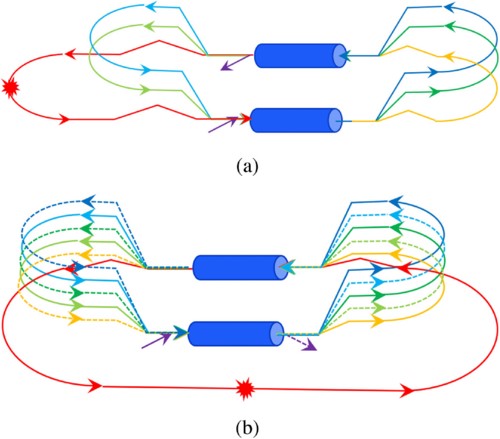Energy Recovery Linacs (ERLs) reuse the kinetic energy of an accelerated electron bunch by transferring it to a freshly injected bunch. This mechanism enables a large reduction in the RF power required in comparison to linacs, without resorting to the lower quality inherent in stored beams. ERLs are therefore recognised as prime candidates for the next generation of electron colliders and free-electron laser light sources, promising higher luminosity and average power respectively.

A team of CI scientists have just published an article in Physical Review – Accelerators and Beams where “self-consistent longitudinal matches” of multipass ERLs for both collider and Free Electron Laser applications is explored for the first time.
Unlike storage rings and linacs, ERLs with multiple passes allow many different configurations in terms of acceleration, beam manipulation, and deceleration sections. However only a small subset of these possible configurations produce a “self-consistent longitudinal match”, where the correct bunch lengths and energy spreads are simultaneously satisfied at all points in the machine, whilst still fulfilling the energy recovery criterion.
In the paper, authors Gustavo Perez-Segurana (Lancaster), Ian Bailey (Lancaster) and Peter Williams (ASTeC), arrive to the hitherto unrealised conclusion that choosing common return transport beamlines severely restricts the availability of a self-consistent match, particularly when synchrotron radiation losses are important.
Therefore, any high energy multipass ERL collider based upon common recirculation transport will require special care to produce a self-consistent longitudinal match, wheras one based upon separate transport is readily available.
On the other hand, any high energy multipass ERL FEL driver based upon common recirculation transport requires a larger resultant rf beam load, favoring the separate transport designs.
Full article:
Gustavo Pérez Segurana, Ian R. Bailey, and Peter H. Williams
Construction of self-consistent longitudinal matches in multipass energy recovery linacs
Phys. Rev. Accel. Beams 25, 021003 (2022)
https://doi.org/10.1103/PhysRevAccelBeams.25.021003
License CC BY 4.0
